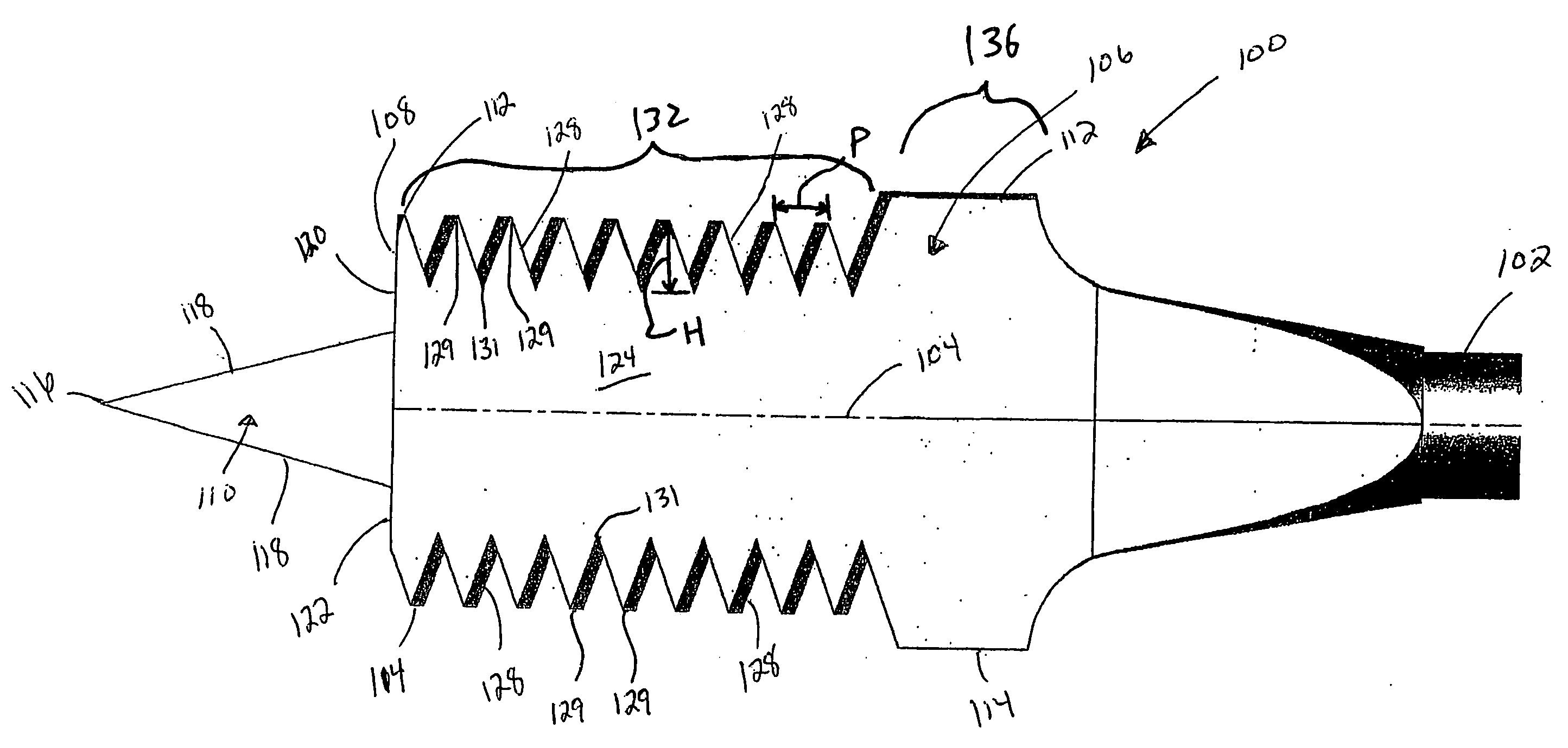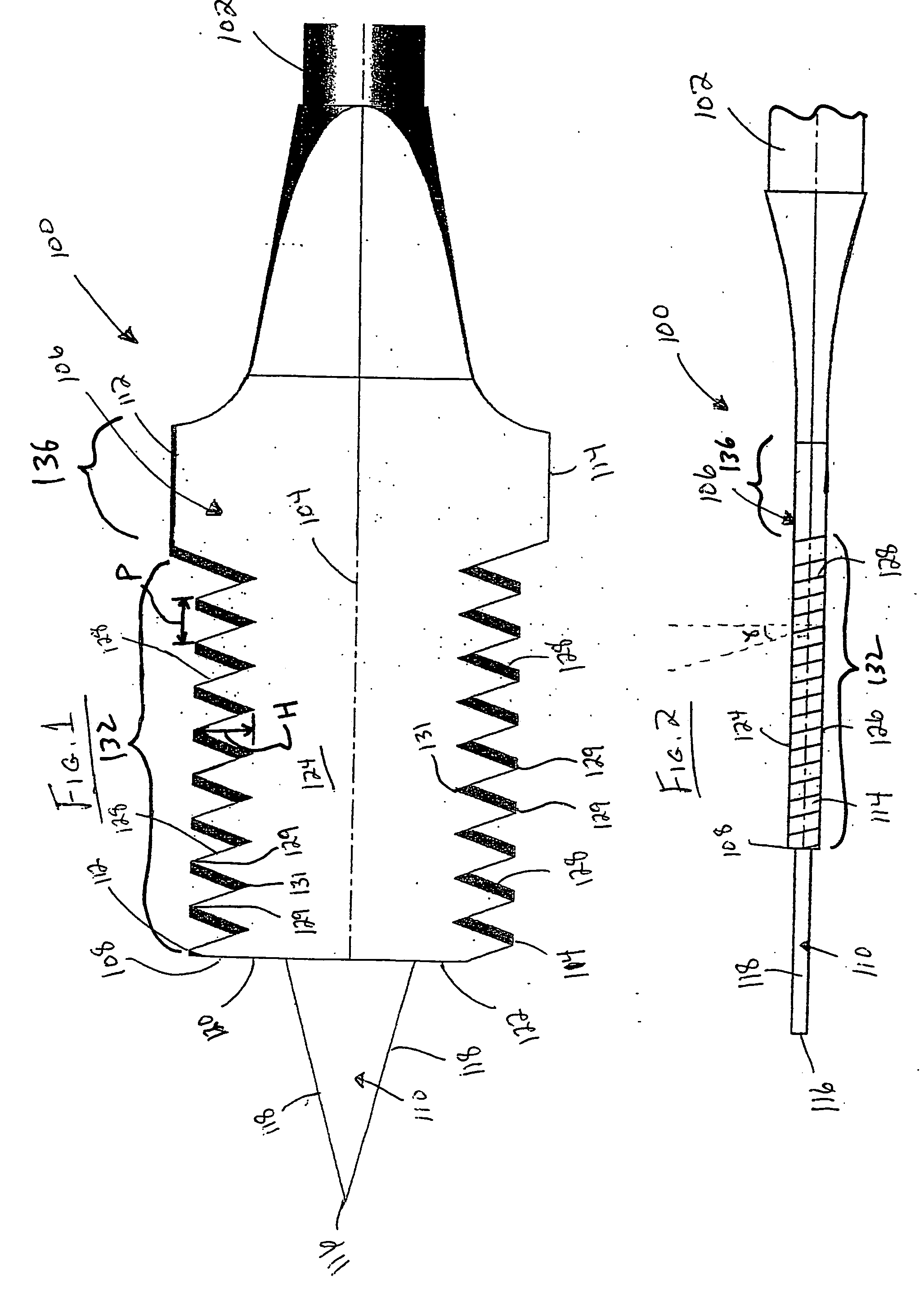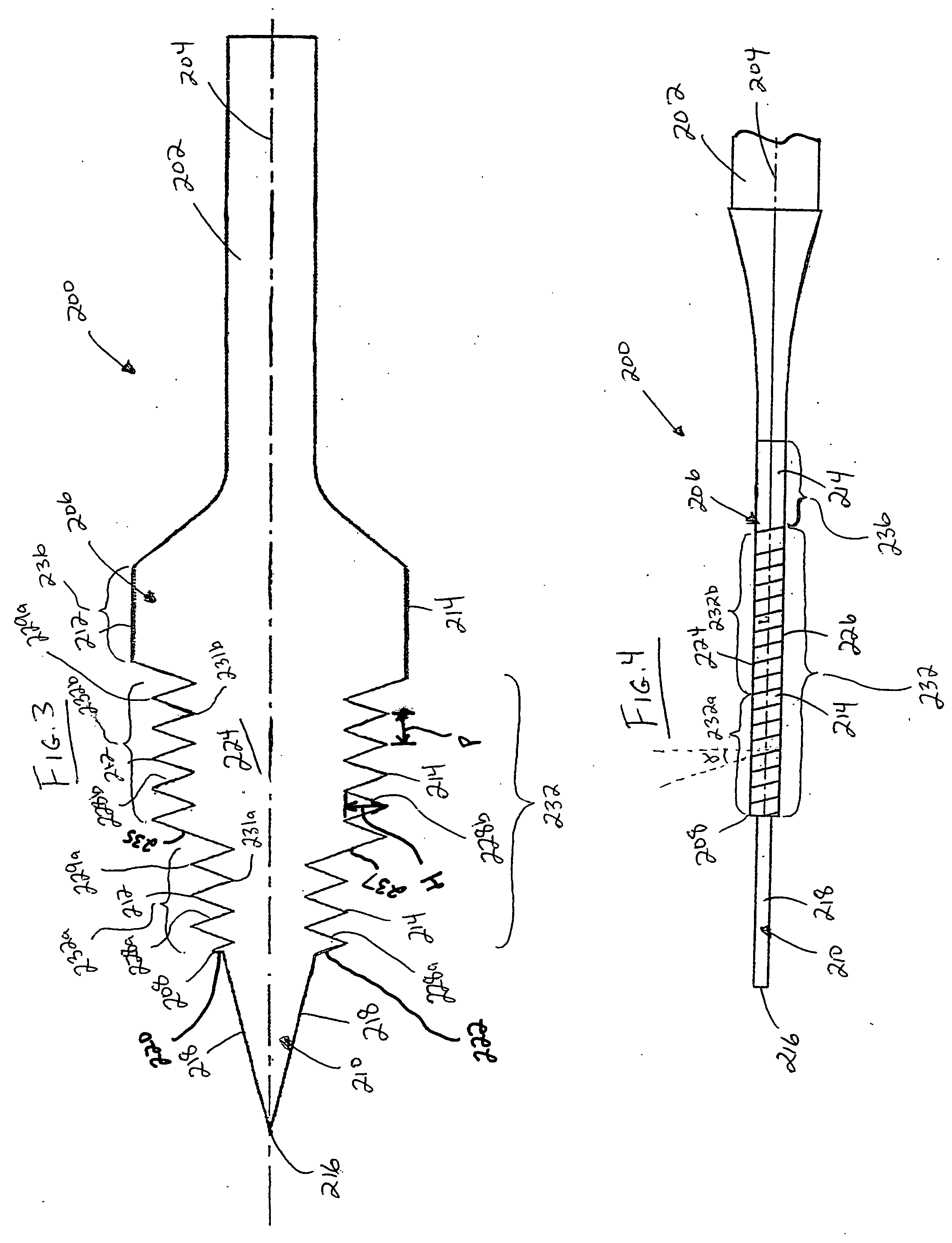Spade bit
a technology of spade bit and flat spade bit, which is applied in the field of spade bit, can solve the problems of increasing the pressure of the user to get the bit, affecting the quality of the product, and causing the operator to be more likely to injure himself/herself, so as to reduce the chance of the operator injuring himself/herself, the effect of reducing the amount of vibration transferred to the user and being inexpensive to manufactur
- Summary
- Abstract
- Description
- Claims
- Application Information
AI Technical Summary
Benefits of technology
Problems solved by technology
Method used
Image
Examples
first embodiment
[0061] The spade bit 200 provides the same advantages over the standard spade bit as does the spade bit 100 of the first embodiment, but further provides the advantages of having the spade bit 200 feed itself with less engagement of the blade portion 206 with the work piece, i.e., ¼″ as opposed to ¾″. Further, the spade bit 200 has a distinct step in the first portion 232 of the blade portion 206 as the grooves 228a are provided on the first section 232a of the first portion 232 which has a diameter which is smaller than a diameter of the second section 232b of the first portion 232, where the grooves 228b are provided. As the first section 232a of the first portion 232 has a smaller diameter, the grooves 228a are able to provide more pulling with less resistive torque. The first section 232a of the first portion 232 requires less engagement with the workpiece before the spade bit 200 begins pulling itself through.
[0062] The second portion 236 is again provided in order to improve t...
fourth embodiment
[0075] Attention is invited to the spade bit 400 is illustrated in FIGS. 7-8. The spade bit 400 includes an elongated shaft 402 which defines a longitudinal axis 404. A generally flat blade portion 406 is joined to a forward end of the shaft 402. A rear end of the shaft 402, opposite the forward end, is received and held by a drill (not shown) during drilling operations.
[0076] A forward end 408 of the blade portion 406, opposite the forward end of the shaft 402, has a spur 410 which extends therefrom. The spur 410 is provided equidistant between a first side edge 412 of the blade portion 406 and a second side edge 414 of the blade portion 406. The spur 410 is used to center and to guide the spade bit 400 during drilling operations. The spur 410 is generally of a triangular or pyramidal configuration such that it comes to a point 416. The spur 410 also includes cutting edges 418 for removing wood or other material when the spade bit 400 is rotated in a predetermined direction of rota...
PUM
| Property | Measurement | Unit |
|---|---|---|
| thickness | aaaaa | aaaaa |
| thickness | aaaaa | aaaaa |
| lead angle | aaaaa | aaaaa |
Abstract
Description
Claims
Application Information
 Login to View More
Login to View More - R&D
- Intellectual Property
- Life Sciences
- Materials
- Tech Scout
- Unparalleled Data Quality
- Higher Quality Content
- 60% Fewer Hallucinations
Browse by: Latest US Patents, China's latest patents, Technical Efficacy Thesaurus, Application Domain, Technology Topic, Popular Technical Reports.
© 2025 PatSnap. All rights reserved.Legal|Privacy policy|Modern Slavery Act Transparency Statement|Sitemap|About US| Contact US: help@patsnap.com



